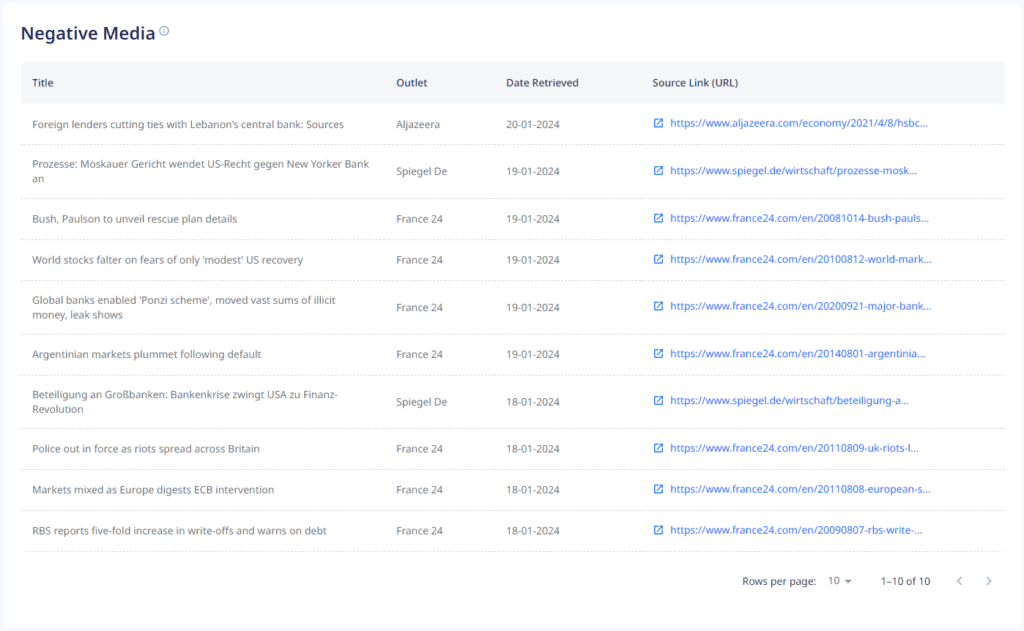Uncovering Negative Media for Comprehensive Due Diligence
The Negative Media tool within ADAMftd is a vital component for thorough due diligence on companies. This feature scours global news outlets to uncover any negative media coverage related to potential or existing customers, suppliers, or competitors. By identifying and presenting articles on issues such as human rights abuses, involvement in conflict minerals, sanctions violations, and other reputational risks, ADAMftd helps businesses ensure compliance with supply chain transparency and traceability, as well as AML and KYC laws. This proactive approach not only protects businesses from legal and regulatory pitfalls but also helps maintain a positive reputation by providing deep insights into the background and activities of business partners, ensuring supply chains remain ethical and compliant.

Negative Media Information Use Cases

Monitoring Negative Media for Brand Reputation
By tracking negative media coverage, companies can swiftly address issues that could harm their brand reputation. This proactive approach allows them to respond to customer complaints, rectify misinformation, and mitigate damage before it escalates. Maintaining a positive brand image is crucial for customer trust and loyalty, and continuous media monitoring helps in safeguarding the brand’s integrity.

Identifying and Responding to Media Crises
Media monitoring enables companies to identify potential crises early and respond quickly to mitigate their impact. This can include product recalls, corporate scandals, or public relations mishaps. By having a crisis management plan informed by real-time media insights, companies can correct the narrative, minimize negative fallout, and restore stakeholder confidence more effectively.

Gaining Insights into Competitors' Challenges
Monitoring negative media about competitors provides valuable insights into their weaknesses and challenges. This information can be leveraged to improve a company’s own strategies, capitalize on competitors’ shortcomings, and identify opportunities for differentiation. Understanding competitors’ vulnerabilities helps companies stay ahead in the market by learning from others’ mistakes.

Understanding Negative Customer Feedback
Tracking negative media coverage helps companies understand customer dissatisfaction and the specific issues that drive it. By analyzing this feedback, companies can make necessary improvements to their products, services, or customer support. Addressing negative sentiments proactively enhances customer satisfaction, retention, and loyalty.

Keeping Track of Regulatory Issues and Non-Compliance
Media monitoring helps companies stay informed about regulatory changes and compliance-related issues within their industry. By identifying negative media reports on regulatory breaches or non-compliance, companies can ensure they adhere to all relevant laws and standards, mitigating fines, legal issues, and reputational damage.

Tracking Negative Trends and Industry Challenges
Monitoring negative media helps companies stay updated on adverse trends and challenges within their industry. This includes economic downturns, technological disruptions, or shifts in consumer behavior. By understanding these trends, companies can adjust their strategies, innovate, and remain resilient in the face of industry-wide challenges, ensuring long-term sustainability and growth.
